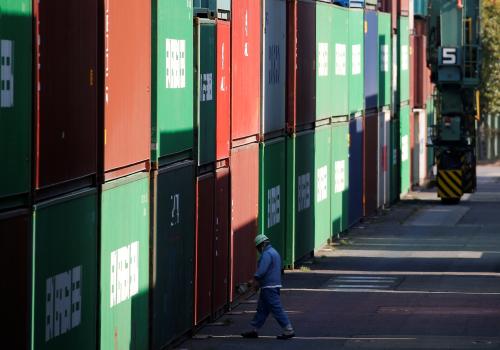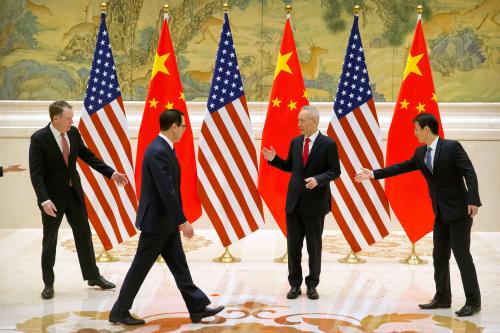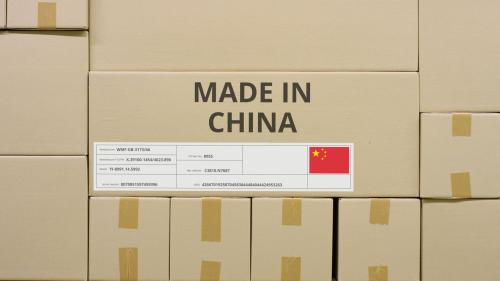This op-ed was originally published by Project Syndicate.
Since World War II’s end, trade has grown 50 percent faster than global GDP, owing largely to successive rounds of liberalization under the auspices of the World Trade Organization (previously the General Agreement on Tariffs and Trade, or GATT). But now, U.S. President Donald Trump’s latest dose of import tariffs could push the world into a full-blown trade war, undoing much of that progress.
Proponents of free trade have always celebrated the growth of international commerce because they regard it as a sign that countries are capitalizing on their comparative advantages through specialization, which implies increased efficiency overall. By contrast, critics of free trade worry that it might lock poor countries into producing goods that offer little room for productivity growth, and point out that even if there are aggregate gains from globalization, there are also clear losers.
In fact, few would disagree that a static comparative advantage theory is a poor guide for development policy. A more dynamic framework is needed to determine whether trade also brings knowledge and learning to new markets. If it does, then it can be an engine of future economic growth and social progress.
Overall, there is overwhelming evidence that trade has indeed enriched developing countries where supportive policies have been in place. Over time, developing countries have learned to complement trade policies with higher investment in infrastructure and education. But with the world trading system now under assault by the United States, the question for developing countries is how to respond.
To justify his tariffs, Trump points to America’s bilateral (or multilateral) trade deficits with its trading partners. But while tariffs can change the composition of trade flows, they will have little bearing on the current-account balance, which is determined by national savings and investment. If savings fall short of investment—as they do in the U.S.—the current account will necessarily be in deficit.
To be sure, tariffs can have an incidental effect on the current-account balance. As a tax on domestic consumers and a subsidy for certain domestic producers, tariffs reduce consumers’ disposable income and augment capital income. To the extent that more capital income is saved relative to labor income, tariffs will increase the economy’s overall savings rate. Nevertheless, this effect on the savings-investment balance is both weak and indirect.
At the micro level, Trump might argue that tariffs are necessary to protect particular sectors. But many of the goods imported into the U.S. actually contain intermediate inputs that were originally produced domestically (this is even more the case for China). So, to determine whether tariffs are actually protecting the value added-wages and profits in a particular U.S. sector, one must also account for the U.S. value added within imports that are now facing levies. Assuming that Trump’s advisers have explained these complications to him, one wonders what his real rationale is.
While Trump’s desire to prop up politically important industries and reduce the U.S. current-account deficit has certainly played a role in his trade policy, it is clear that his main target is the WTO and the multilateralism that it represents. Trump seems to think that multilateralism dilutes American power, given that the U.S. can always use its economic and geopolitical clout to win a bilateral dispute. What he doesn’t realize is that even the world’s most powerful country still needs impartial global rules and disinterested institutions to oversee them.
Over the past 70-odd years, the GATT/WTO system has developed into a multilateral arrangement whereby the same rules apply to all countries alike. That is not to say that bigger and richer countries lack advantages over smaller and poorer countries. Countries like the U.S. can allocate more staff and specialists to support their own producers in complicated trade negotiations, while also pursuing parallel (back-channel) diplomacy. Legally, however, the WTO is a grouping of equals. The “most favored nation” provision means that an advantage extended to one country’s producers must be extended to all.
Perhaps most important, the WTO has a dispute-settlement mechanism (DSM) that provides for the timely resolution of disagreements between member states. Though the U.S. has won most of the cases that it has brought before the WTO’s arbitration panel, it has also lost some. With the ability to hand down binding judgments, the DSM is a unique feature of the WTO system. No other multilateral body has such a mechanism.
There are many ways that the multilateral system could be improved, of course. The WTO, the World Bank, and the International Monetary Fund should be devising new approaches to address the growing influence of Big Tech; and competition policy needs to be brought into the twenty-first century. It might also be appropriate for the WTO to adopt a form of weighted voting, similar to the procedure used by the IMF and World Bank.
As for the criticism that globalization produces both winners and losers, this is not an argument against trade; it is an argument for policies to compensate those who have been left behind. On that basis, those who have rightly criticized the WTO in the past should join forces with its supporters. Both sides have an interest in defending this key institution of global governance from the xenophobic unilateralism embodied by Trump’s policies.
The Brookings Institution is committed to quality, independence, and impact.
We are supported by a diverse array of funders. In line with our values and policies, each Brookings publication represents the sole views of its author(s).







Commentary
Op-edWhat’s behind Trump’s trade war?
October 9, 2018